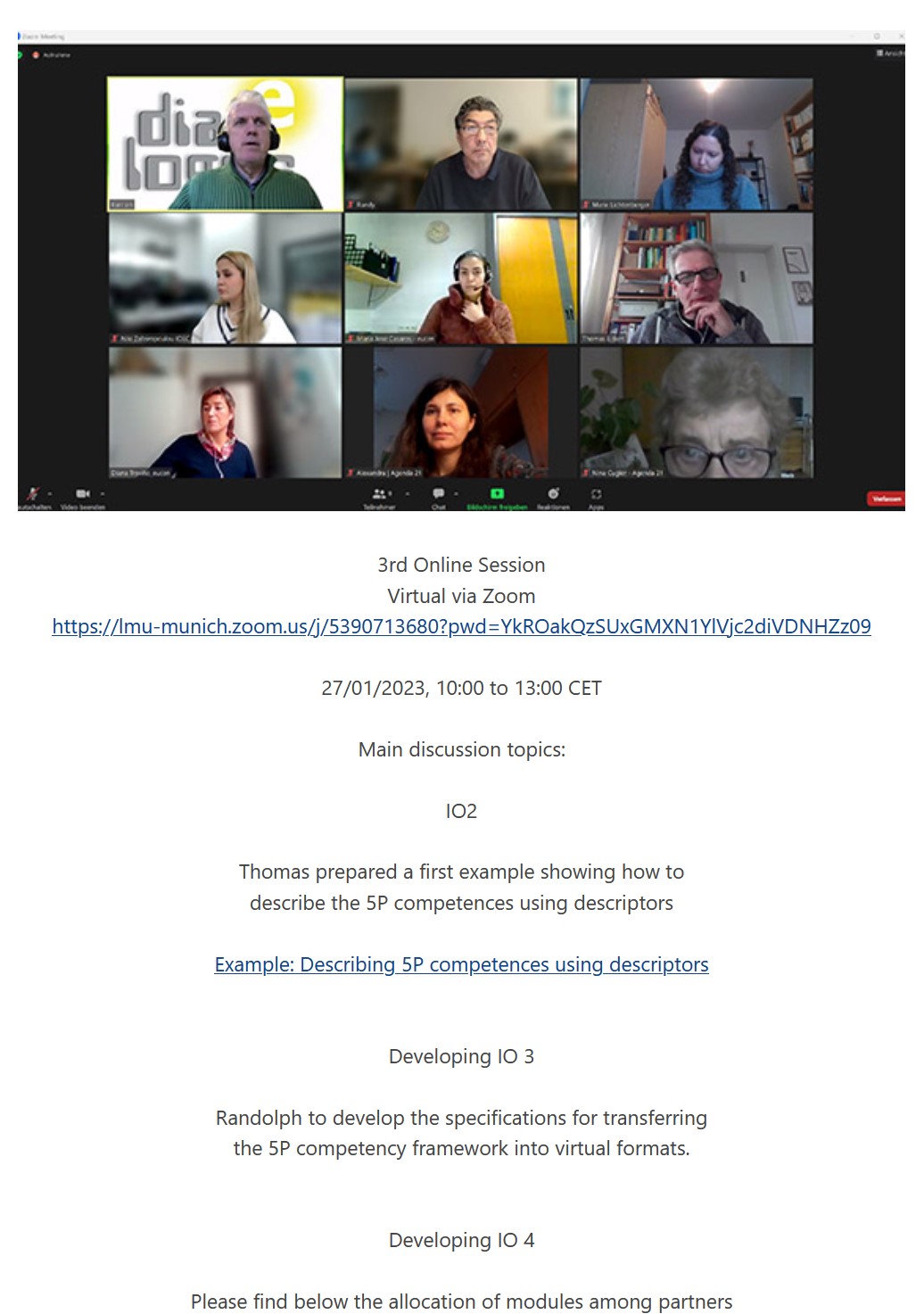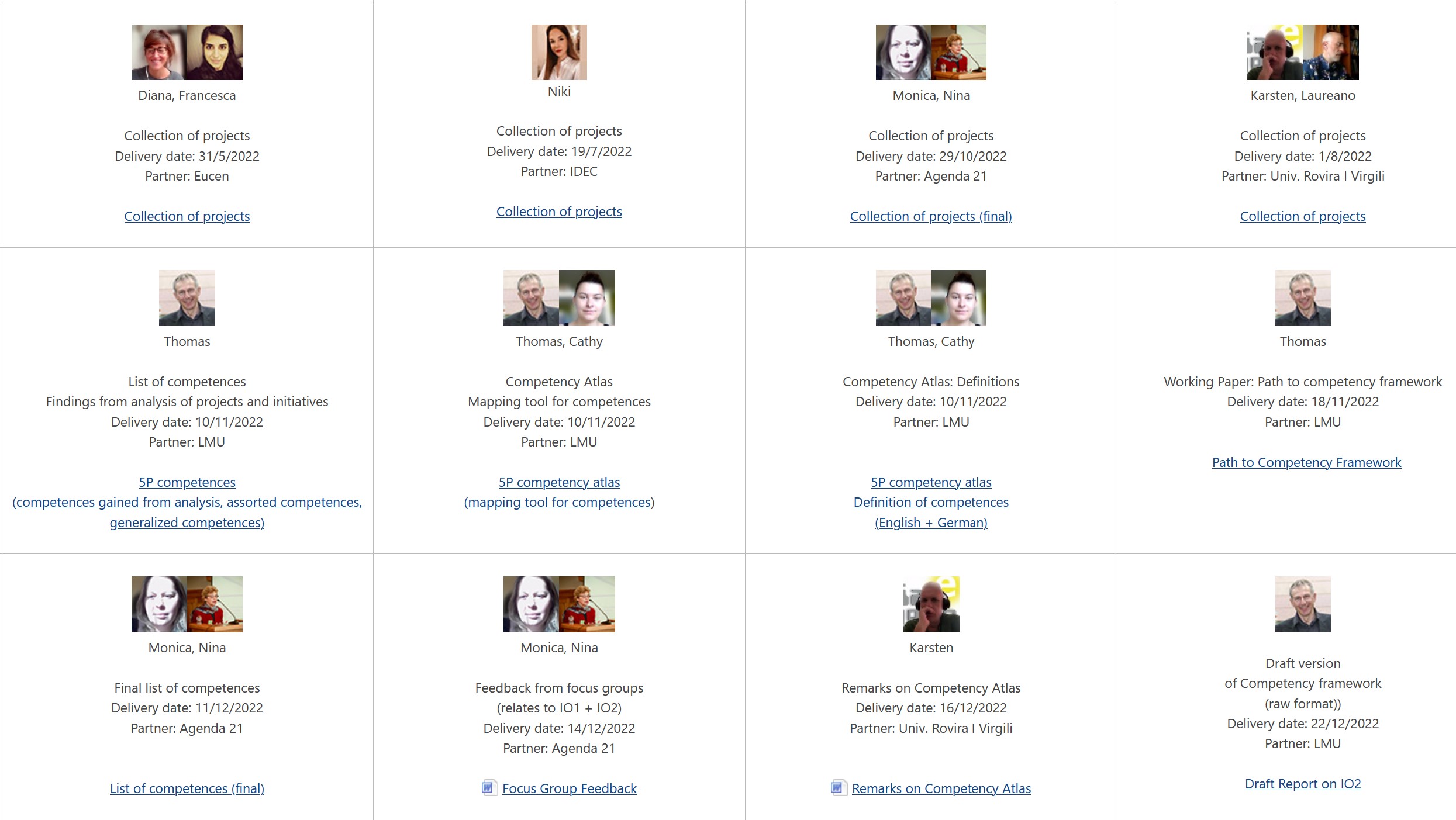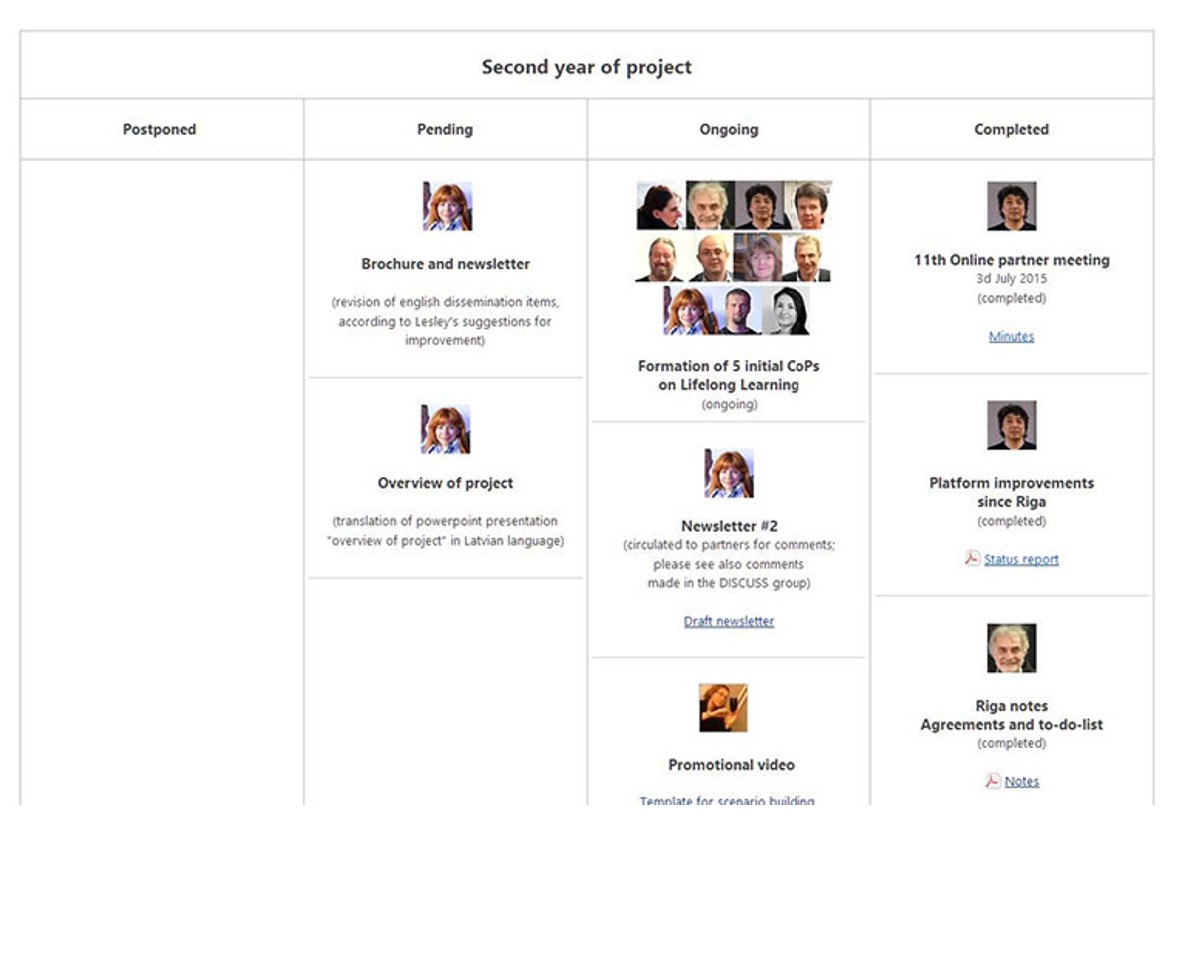The digital revolution has transformed the way citizens access information, communicate and learn. This poses great challenges for educational institutions and their staff. Teachers and planners not only are requested to incorporate digital technology in curricula and training plans, but to develop digital solutions for a wide range of functions and purposes educational organisations are expected to deliver. For example, digital media and tools can play an important role when it comes to collaboration with others, exchange experience and materials, qwith a view to jointly develop teaching concepts. In the course of the European "Skillsmatch" project we developed learning nuggets on how to use of digital media to share and exchange knowledge, resources and experiences with colleagues.
Standard project management software is doing a good job when it’s about planning, monitoring, documentation of results and outcomes, accountancy and evaluation. They however require full control over all project parameters from the first to last second. The project design is supposed to be exactly right from the beginning, and within some narrow confines to remain unchanged until the end of the project. But, the most crucial downside is the fact, that most of those tools don't grow with the project needs.
Moreover, standard project management software shows of very limited value when it’s about the a) creation of shared meaning of the project, as well as objectives and tasks, b) building of common ground for collaborative action, c) ensuring commitment, ownership and active engagement of everyone involved in the project and d) promoting exchange of experience and knowledge.
In our opinion many of the problems that occur during the course of projects can be attributed to the absence of one or more of these conditions. The reasons may vary, as do the problems caused by them. A WIKI gives collaborators visibility into their work process and, more importantly, gives individuals and project partners a clear sense of where their work fits into the big picture, work and efforts of the team, questions they are grappling with and the complexity of tasks. Thus, WIKIs not only support a better understanding of the whole collaborative endevaour, but help to break down any ‘them and us’ thinking.
WIKIs also offer a variety of tools, which can be used to visualize virtually every aspect of a project. For example, our wikis start with a picture of the team, taken at a workshop all participants felt comfortable with. This reminds people of both, that they are part of a bigger team, and in a more subtle manner, of successful collaboration in the past.

Moreover, we add photographs of key actors to each single task and activity. So, everyone in an eye-catching manner can see who's engaged in a certain piece of work, team mates sharing the work, persons with leading roles, peer reviewers involved etc. Photos show that a real person is behind each activity. Nothing is sadder than tasks lists with a bunch of partner logos, indicating the organisation a person represents in the project partnership.

The photograph is followed by both, a short and detailed description of tasks and activities. We usually spend plenty of time on breaking down „abstract“ tasks into concrete activities because of two reasons.
We often have the situation that major parts of a project were developed by one or two key persons, who built the project on assumptions, ideas and concepts most of which remain implicit and thus, there is a certain risk that people come to different interpretations of the same text. Also at this point WIKIs can be of great value, because they allow project actors to add their point of view or make comments on conclusions drawn by others. So, step by step the partnership can build common ground for the project.

Although some preliminary work (around 3 days) will be necessary to set up a WIKI, this investment pays off during the lifetime of the project and beyond. When creating a WIKI, the first step usually is to develop an overall structure and to define the areas and categories of utmost relevance for the project. All that should be kept as simple as possible.
Needless to say, that project managers should always bear in mind that, it’s first and foremost persons who come together in projects in order to share their experience and expertise towards solving a problem or developing innovations, while partner organisations by and large remain black boxes for those collaborating on a daily basis. But that's another story.
Over the years WIKIs for us turned out a quite valuable tool, helping to support the project actors towards developing a sense of ownership for processes and results , as well as building common ground and shared meaning for collaborative action.
Find the full learning nugget on https://e-trainingcentre.gr/course/index.php?categoryid=53